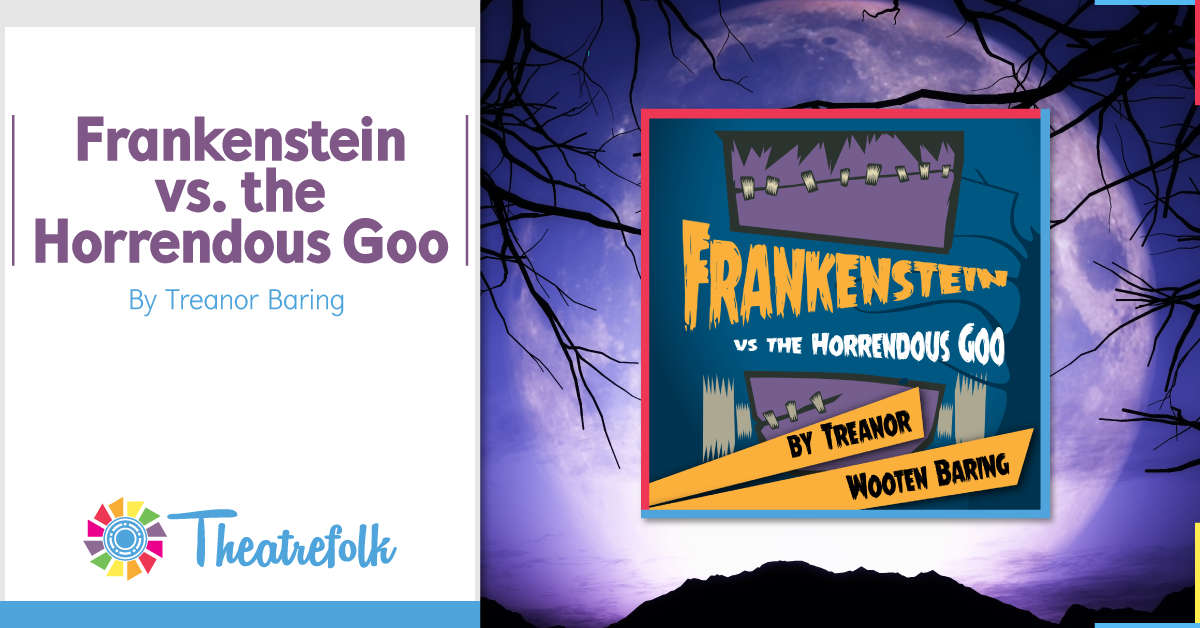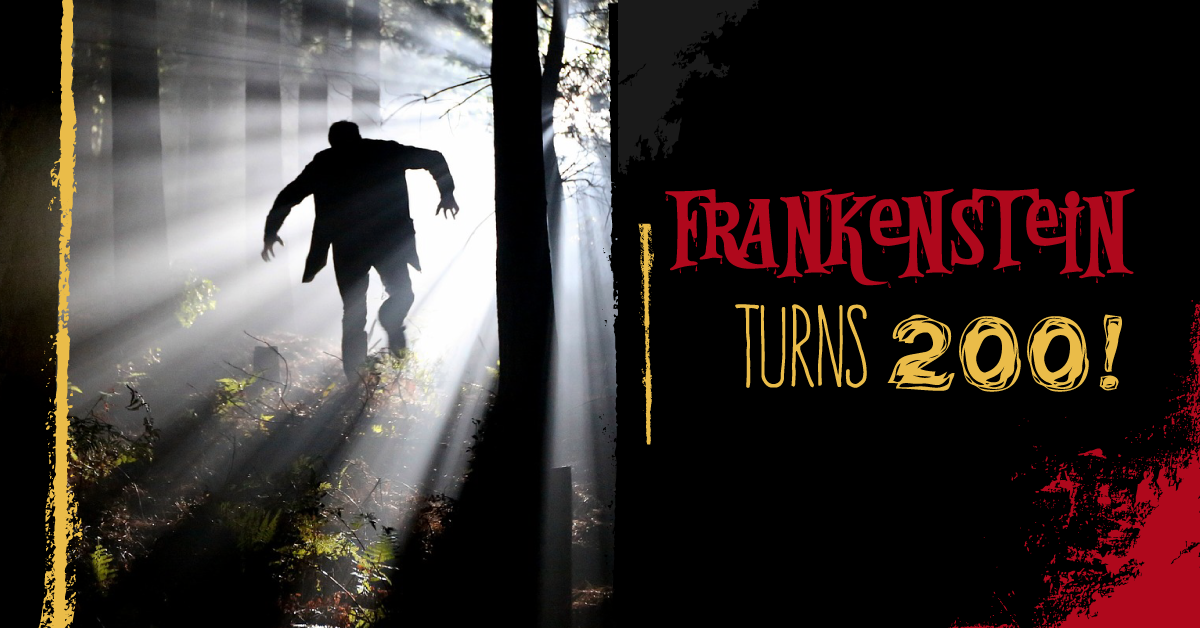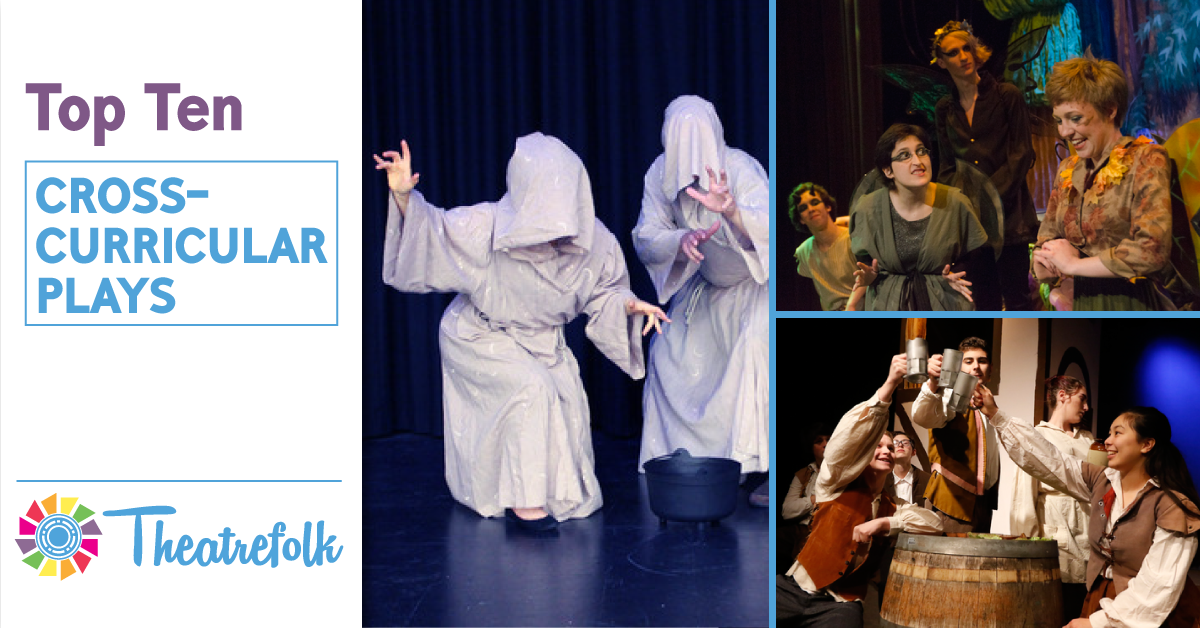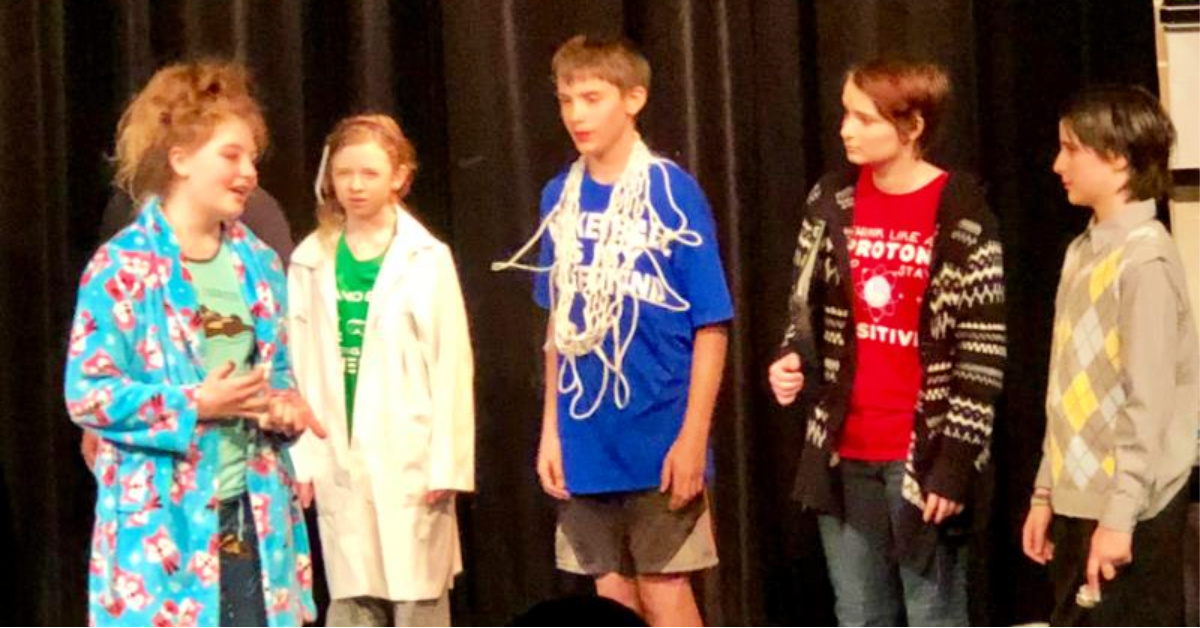Agatha Rex by Lindsay Price is a bold high school take on Antigone - packed with heart, conflict, and a powerhouse ensemble. One girl. One stand. One huge risk. *NEW COMPETITION VERSION AVAILABLE!*
Theatrefolk Featured Play: Frankenstein vs the Horrendous Goo by Treanor Baring
Welcome to our Featured Play Spotlight. Today we look at Frankenstein vs the Horrendous Goo, a fast-paced, action-packed comedy that middle school actors and their audiences will delight in. A mix-up in the chemistry club creates a horrendous goo that takes over John Dalton School. Students, administrators and even parents get “goo-ed” by this mysterious green slime with a mind of its own.
Who is behind the attack of the mutant polymer? Can the students disentangle the clues from what they’ve learned in chemistry, theatre and psychology class? Why is Frankenstein brought in to save the day? And why is he writing love notes?
NOTE: Available in both a one-act and a competition-length version!
Why did we publish this play?
Strong characters. Interesting characters. Three-dimensional characters. Middle school aged characters. FUNNY characters. And of course – Frankenstein. Who doesn’t want an opportunity to play Frankenstein? This is not a childish spin through a monster story. Frankenstein has heart and a penchant for poetry. Add to that some physical acting opportunities (everyone has to “see” the goo and react to it) and you’ve got a winner of a piece.
Let’s hear from the author!
1. Why did you write this play?
I wrote the play after a conversation with a theatre teacher at a local middle school about what she looks for in plays. She has a very low budget, but great support for her program among teachers, students and parents. She needs plays with simple sets and costumes, and themes that middle schoolers can relate to. At the same time, there’s a trend toward “across the curriculum” activities, so a play about science would be ideal. The idea for a “chemistry play” was born. I wanted the play to include a lot of physical action, a little bit of romance, and above all, fun.
2. Describe the theme in one or two sentences.
A mix-up in a chemistry club creates a horrendous goo that brings havoc and hilarity to a middle school. Students work with each other and Frankenstein to restore “normalcy,” discovering themselves and a little romance along the way.
3. What’s the most important visual for you in this play?
The students in the chemistry club screaming when they first see Frankenstein’s face in a flashlight beam. I can also see a nice group shot of the entire cast with their golf-clubs and spray bottles (to fend off the monster) posed with Frankenstein and Miss Nullam in a “happy ending.”
4. If you could give one piece of advice for those producing the play, what would it be?
Don’t worry too much about technical aspects. Directors can keep it simple and the comedy will still shine through. The play’s emphasis is on letting the student actors have fun in their parts and acting out the slapstick. There are a few sound and light effects, and plenty of props, and these can be basic or elaborate depending on a theatre program’s resources. The props that attach to the costumes, for instance, can be drawn on cardboard and hung from string around the students. Even the sound effects can be made by students themselves. While I was writing the play, the local high school theatre class did a read-through and the students made the phone ringing sound with their voices, like “brrring, brrring” and it even added to the humor.
5. Why is this play great for student performers?
The play takes place in a middle school, so most of the characters are students the actors can relate to: the basketball star, the science nerd, the cute theatre student. The exceptions are fun characters to play: Frankenstein, the obnoxious attendance officer, the over- involved parent. This play gives the actors the chance to work on their physical comedy skills, like miming being taken over by slime, or being frightened by Frankenstein.
I think the characters are strong, too, so that student actors will enjoy developing their parts to bring out the differences between the characters. I also tried to balance the lines between the leads to make it accessible to school programs putting together performances in a limited time frame. My aim was to create a play that fills a need across a spectrum of programs, from short-term after school programs to full-semester theatre classes. Directors can also choose between the full-length version and the competition length to suit their program’s needs.



